CK1α/RUNX2 Axis in the Bone Marrow Microenvironment: A Novel Therapeutic Target in Multiple Myeloma
Abstract
Simple Summary
Abstract
1. Introduction
2. Materials and Methods
2.1. Patients and Cell Cultures
2.2. RNA Interference
2.3. Co-Culture Models
2.4. Cell Sorting
2.5. Wnt-3A Stimulation
2.6. Chemicals
2.7. Evaluation of Apoptosis and Cell Viability
2.8. Cell Cycle Analysis
2.9. Western Blot (WB)
2.10. Quantitative Real-Time PCR
2.11. Alkaline Phosphatase Assay
2.12. Statistical Analysis
3. Results
3.1. CK1α Silencing in Stromal Cells Leads to the Upregulation of Β-Catenin and Osteogenic Markers
3.2. Activation of the Wnt/β-Catenin Signaling Pathway Is Associated with the Upregulation of RUNX2 Expression in Stromal Cells
3.3. The Role of CK1α in Plasma Cell–Stromal Cell Cross-Talk in a Bone Marrow Microenvironment Model
3.4. Cell Adhesion Sustains RUNX2 Expression in MM Cells
3.5. The Role of Lenalidomide in Stromal Cell Osteogenic Differentiation Potential
4. Discussion
5. Conclusions
Supplementary Materials
Author Contributions
Funding
Institutional Review Board Statement
Informed Consent Statement
Data Availability Statement
Acknowledgments
Conflicts of Interest
References
- Castaneda, O.; Baz, R. Multiple Myeloma Genomics—A Concise Review. Acta Med. Acad. 2019, 48, 57–67. [Google Scholar] [CrossRef] [PubMed]
- Corre, J.; Munshi, N.; Avet-Loiseau, H. Genetics of multiple myeloma: Another heterogeneity level? Blood 2015, 125, 1870–1876. [Google Scholar] [CrossRef] [PubMed]
- Panaroni, C.; Yee, A.J.; Raje, N.S. Myeloma and Bone Disease. Curr. Osteoporos. Rep. 2017, 15, 483–498. [Google Scholar] [CrossRef] [PubMed]
- Brigle, K.; Rogers, B. Pathobiology and Diagnosis of Multiple Myeloma. Semin. Oncol. Nurs. 2017, 33, 225–236. [Google Scholar] [CrossRef] [PubMed]
- Bingham, N.; Reale, A.; Spencer, A. An Evidence-Based Approach to Myeloma Bone Disease. Curr. Hematol. Malig. Rep. 2017, 12, 109–118. [Google Scholar] [CrossRef]
- Mazziotta, C.; Lanzillotti, C.; Iaquinta, M.R.; Taraballi, F.; Torreggiani, E.; Rotondo, J.C.; Otòn-Gonzalez, L.; Mazzoni, E.; Frontini, F.; Bononi, I.; et al. Micrornas modulate signaling pathways in osteogenic differentiation of mesenchymal stem cells. Int. J. Mol. Sci. 2021, 22, 2362. [Google Scholar] [CrossRef]
- Marino, S.; Roodman, G.D. Multiple myeloma and bone: The fatal interaction. Cold Spring Harb. Perspect. Med. 2018, 8, a031286. [Google Scholar] [CrossRef]
- Du, J.S.; Yen, C.H.; Hsu, C.M.; Hsiao, H.H. Management of myeloma bone lesions. Int. J. Mol. Sci. 2021, 22, 3389. [Google Scholar] [CrossRef]
- Nierste, B.A.; Glackin, C.A.; Kirshner, J. Dkk-1 and IL-7 in plasma of patients with multiple myeloma prevent differentiation of mesenchymal stem cells into osteoblasts. Am. J. Blood Res. 2014, 4, 73–85. [Google Scholar]
- Giuliani, N.; Colla, S.; Sala, R.; Moroni, M.; Lazzaretti, M.; La Monica, S.; Bonomini, S.; Hojden, M.; Sammarelli, G.; Barille, S.; et al. Human myeloma cells stimulate the receptor activator of nuclear factor-κB ligand (RANKL) in T lymphocytes: A potential role in multiple myeloma bone disease. Blood 2002, 100, 4615–4621. [Google Scholar] [CrossRef]
- Hideshima, T.; Mitsiades, C.; Tonon, G.; Richardson, P.G.; Anderson, K.C. Understanding multiple myeloma pathogenesis in the bone marrow to identify new therapeutic targets. Nat. Rev. Cancer 2007, 7, 585–598. [Google Scholar] [CrossRef] [PubMed]
- Caetano-Lopes, J.; Canhão, H.; Fonseca, J.E. Osteoblasts and bone formation. Acta Reum. Port. 2007, 32, 103–110. [Google Scholar] [CrossRef]
- Geoffroy, V.; Ducy, P.; Karsenty, G. A PEBP2α/AML-1-related factor increases osteocalcin promoter activity through its binding to an osteoblast-specific cis-acting element. J. Biol. Chem. 1995, 270, 30973–30979. [Google Scholar] [CrossRef]
- Ducy, P.; Zhang, R.; Geoffroy, V.; Ridall, A.L.; Karsenty, G. Osf2/Cbfa1: A transcriptional activator of osteoblast differentiation. Cell 1997, 89, 747–754. [Google Scholar] [CrossRef]
- Giuliani, N.; Colla, S.; Morandi, F.; Lazzaretti, M.; Sala, R.; Bonomini, S.; Grano, M.; Colucci, S.; Svaldi, M.; Rizzoli, V. Myeloma cells block RUNX2/CBFA1 activity in human bone marrow osteoblast progenitors and inhibit osteoblast formation and differentiation. Blood 2005, 106, 2472–2483. [Google Scholar] [CrossRef]
- Giuliani, N.; Mangoni, M.; Rizzoli, V. Osteogenic differentiation of mesenchymal stem cells in multiple myeloma: Identification of potential therapeutic targets. Exp. Hematol. 2009, 37, 879–886. [Google Scholar] [CrossRef]
- Trotter, T.N.; Li, M.; Pan, Q.; Peker, D.; Rowan, P.D.; Li, J.; Zhan, F.; Suva, L.J. Myeloma cell—Derived Runx2 promotes myeloma progression in bone. Exp. Hematol. 2019, 125, 3598–3609. [Google Scholar] [CrossRef]
- Colla, S.; Morandi, F.; Lazzaretti, M.; Rizzato, R.; Lunghi, P.; Bonomini, S.; Mancini, C.; Pedrazzoni, M.; Crugnola, M.; Rizzoli, V.; et al. Human myeloma cells express the bone regulating gene Runx2/Cbfa1 and produce osteopontin that is involved in angiogenesis in multiple myeloma patients. Leukemia 2005, 6, 2166–2176. [Google Scholar] [CrossRef] [PubMed]
- Gaur, T.; Lengner, C.J.; Hovhannisyan, H.; Bhat, R.A.; Bodine, P.V.N.; Komm, B.S.; Javed, A.; Van Wijnen, A.J.; Stein, J.L.; Stein, G.S.; et al. Canonical WNT signaling promotes osteogenesis by directly stimulating Runx2 gene expression. J. Biol. Chem. 2005, 280, 33132–33140. [Google Scholar] [CrossRef] [PubMed]
- Rodda, S.J.; McMahon, A.P. Distinct roles for Hedgehog and caronical Wnt signaling in specification, differentiation and maintenance of osteoblast progenitors. Development 2006, 133, 3231–3244. [Google Scholar] [CrossRef]
- Eijken, M.; Meijer, I.M.J.; Westbroek, I.; Koedam, M.; Chiba, H.; Uitterlinden, A.G.; Pols, H.A.P. Wnt Signaling Acts and Is Regulated in a Human Osteoblast Differentiation Dependent Manner. J. Cell. Biochem. 2008, 104, 568–579. [Google Scholar] [CrossRef] [PubMed]
- Shen, C.; Nayak, A.; Melendez, R.A.; Wynn, D.T.; Jackson, J.; Lee, E.; Ahmed, Y.; Robbins, D.J. Casein kinase 1α as a regulator of wnt-driven cancer. Int. J. Mol. Sci. 2020, 21, 5940. [Google Scholar] [CrossRef] [PubMed]
- Manni, S.; Carrino, M.; Manzoni, M.; Gianesin, K.; Nunes, S.C.; Costacurta, M.; Tubi, L.Q.; Macaccaro, P.; Taiana, E.; Cabrelle, A.; et al. Inactivation of CK1α in multiple myeloma empowers drug cytotoxicity by affecting AKT and β-catenin survival signaling pathways. Oncotarget 2017, 8, 14604–14619. [Google Scholar] [CrossRef]
- Janovská, P.; Normant, E.; Miskin, H.; Bryja, V. Targeting casein kinase 1 (Ck1) in hematological cancers. Int. J. Mol. Sci. 2020, 21, 9026. [Google Scholar] [CrossRef]
- Spinello, Z.; Fregnani, A.; Tubi, L.Q.; Trentin, L.; Piazza, F.; Manni, S. Targeting protein kinases in blood cancer: Focusing on ck1α and ck2. Int. J. Mol. Sci. 2021, 22, 3716. [Google Scholar] [CrossRef] [PubMed]
- Venerando, A.; Marin, O.; Cozza, G.; Bustos, V.H.; Sarno, S.; Pinna, L.A. Isoform specific phosphorylation of p53 by protein kinase CK1. Experientia 2010, 67, 1105–1118. [Google Scholar] [CrossRef]
- Jiang, S.; Zhang, M.; Sun, J.; Yang, X. Casein kinase 1α: Biological mechanisms and theranostic potential. Cell Commun. Signal. 2018, 16, 23. [Google Scholar] [CrossRef]
- Manni, S.; Fregnani, A.; Tubi, L.Q.; Spinello, Z.; Carraro, M.; Scapinello, G.; Visentin, A.; Barilà, G.; Pizzi, M.; Paolo, A.; et al. Protein Kinase CK1 a Sustains B-Cell Receptor Signaling in Mantle Cell Lymphoma. Front. Oncol. 2021, 11, 733848. [Google Scholar] [CrossRef]
- Carrino, M.; Quotti Tubi, L.; Fregnani, A.; Canovas Nunes, S.; Barilà, G.; Trentin, L.; Zambello, R.; Semenzato, G.; Manni, S.; Piazza, F. Prosurvival autophagy is regulated by protein kinase CK1 alpha in multiple myeloma. Cell Death Discov. 2019, 5, 98. [Google Scholar] [CrossRef]
- Fink, E.C.; Ebert, B.L. The novel mechanism of lenalidomide activity. Blood 2015, 126, 2366–2369. [Google Scholar] [CrossRef]
- Bolomsky, A.; Schreder, M.; Meißner, T.; Hose, D.; Ludwig, H.; Pfeifer, S.; Zojer, N. Immunomodulatory drugs thalidomide and lenalidomide affect osteoblast differentiation of human bone marrow stromal cells in vitro. Exp. Hematol. 2014, 42, 516–525. [Google Scholar] [CrossRef] [PubMed]
- Bolzoni, M.; Storti, P.; Bonomini, S.; Todoerti, K.; Guasco, D.; Toscani, D.; Agnelli, L.; Neri, A.; Rizzoli, V.; Giuliani, N. Immunomodulatory drugs lenalidomide and pomalidomide inhibit multiple myeloma-induced osteoclast formation and the RANKL/OPG ratio in the myeloma microenvironment targeting the expression of adhesion molecules. Exp. Hematol. 2013, 41, 387–397.e1. [Google Scholar] [CrossRef] [PubMed]
- Scullen, T.; Santo, L.; Vallet, S.; Fulciniti, M.; Eda, H.; Cirstea, D.; Patel, K.; Nemani, N.; Yee, A.; Mahindra, A.; et al. Lenalidomide in combination with an activin A-neutralizing antibody: Preclinical rationale for a novel anti-myeloma strategy. Leukemia 2013, 27, 1715–1721. [Google Scholar] [CrossRef] [PubMed]
- Breitkreutz, I.; Raab, M.S.; Vallet, S.; Hideshima, T.; Raje, N.; Mitsiades, C.; Chauhan, D.; Okawa, Y.; Munshi, N.C.; Richardson, P.G.; et al. Lenalidomide inhibits osteoclastogenesis, survival factors and bone-remodeling markers in multiple myeloma. Leukemia 2008, 22, 1925–1932. [Google Scholar] [CrossRef] [PubMed]
- Munemasa, S.; Sakai, A.; Kuroda, Y.; Okikawa, Y.; Katayama, Y.; Asaoku, H.; Kubo, T.; Shimose, S.; Kimura, A. Osteoprogenitor differentiation is not affected by immunomodulatory thalidomide analogs but is promoted by low bortezomib concentration, while both agents suppress osteoclast differentiation. Int. J. Oncol. 2008, 33, 129–136. [Google Scholar] [CrossRef][Green Version]
- Wobus, M.; Benath, G.; Ferrer, R.A.; Wehner, R.; Schmitz, M.; Hofbauer, L.C.; Rauner, M.; Ehninger, G.; Bornhäuser, M.; Platzbecker, U. Impact of lenalidomide on the functional properties of human mesenchymal stromal cells. Exp. Hematol. 2012, 40, 867–876. [Google Scholar] [CrossRef]
- Hu, Y.; Song, W.; Cirstea, D.; Lu, D.; Munshi, N.C.; Anderson, K.C. CSNK1α1 mediates malignant plasma cell survival. Leukemia 2015, 29, 474–482. [Google Scholar] [CrossRef][Green Version]
- Zhang, Y.; Wang, X. Targeting the Wnt/β-catenin signaling pathway in cancer. J. Hematol. Oncol. 2020, 13, 165. [Google Scholar] [CrossRef]
- Yavropoulou, M.P.; Yovos, J.G. The role of the Wnt signaling pathway in osteoblast commitment and differentiation. Hormones (Athens) 2007, 6, 279–294. [Google Scholar] [CrossRef]
- Kang, S.; Bennett, C.N.; Gerin, I.; Rapp, L.A.; Hankenson, K.D.; MacDougald, O.A. Wnt Signaling Stimulates Osteoblastogenesis of Mesenchymal Precursors by Suppressing CCAAT/Enhancer-binding Protein α and Peroxisome Proliferator-activated Receptor γ. J. Biol. Chem. 2007, 282, 14515–14524. [Google Scholar] [CrossRef]
- Costa, F.; Vescovini, R.; Bolzoni, M.; Marchica, V.; Toscani, D.; Accardi, F.; Notarfranchi, L.; Dalla, B.; Manferdini, C.; Manni, S.; et al. Lenalidomide increases human dendritic cell maturation in multiple myeloma patients targeting monocyte differentiation and modulating mesenchymal stromal cell inhibitory properties. Oncotarget 2017, 8, 53053–53067. [Google Scholar] [CrossRef] [PubMed]
- Manni, S.; Toscani, D.; Mandato, E.; Brancalion, A.; Quotti Tubi, L.; Macaccaro, P.; Cabrelle, A.; Adami, F.; Zambello, R.; Gurrieri, C.; et al. Bone marrow stromal cell-fueled multiple myeloma growth and osteoclastogenesis are sustained by protein kinase CK2. Leukemia 2014, 28, 2094–2097. [Google Scholar] [CrossRef] [PubMed]
- Mihara, K.; Imai, C.; Coustan-Smith, E.; Dome, J.S.; Dominici, M.; Vanin, E.; Campana, D. Development and functional characterization of human bone marrow mesenchymal cells immortalized by enforced expression of telomerase. Br. J. Haematol. 2003, 120, 846–849. [Google Scholar] [CrossRef]
- Caverzasio, J.; Manen, D. Essential Role of Wnt3a-Mediated Activation of Mitogen-Activated Protein Kinase p38 for the Stimulation of Alkaline Phosphatase Activity and Matrix Mineralization in C3H10T1/2 Mesenchymal Cells. Endocrinology 2007, 148, 5323–5330. [Google Scholar] [CrossRef] [PubMed]
- Piazza, F.; Manni, S.; Tubi, L.Q.; Montini, B.; Pavan, L.; Colpo, A.; Gnoato, M.; Cabrelle, A.; Adami, F.; Zambello, R.; et al. Glycogen Synthase Kinase-3 regulates multiple myeloma cell growth and bortezomib-induced cell death. BMC Cancer 2010, 10, 526. [Google Scholar] [CrossRef]
- Manni, S.; Brancalion, A.; Mandato, E.; Tubi, L.Q.; Colpo, A.; Pizzi, M.; Cappellesso, R.; Zaffino, F.; Di Maggio, S.A.; Cabrelle, A.; et al. Protein Kinase CK2 Inhibition Down Modulates the NF-κB and STAT3 Survival Pathways, Enhances the Cellular Proteotoxic Stress and Synergistically Boosts the Cytotoxic Effect of Bortezomib on Multiple Myeloma and Mantle Cell Lymphoma Cells. PLoS ONE 2013, 8, e75280. [Google Scholar] [CrossRef]
- Roecklein, B.A.; Torok-Storb, B. Functionally distinct human marrow stromal cell lines immortalized by transduction with the human papilloma virus E6/E7 genes. Blood 1995, 85, 997–1005. [Google Scholar] [CrossRef]
- Tommasino, M.; Crawford, L. Human Papillomavirus E6 and E7: Proteins which deregulate the cell cycle. BioEssays 1995, 17, 509–518. [Google Scholar] [CrossRef]
- Liu, X.; Huang, Q.; Chen, L.; Zhang, H.; Schonbrunn, E.; Chen, J. Tumor-derived CK1α mutations enhance MDMX inhibition of p53. Oncogene 2020, 39, 176–186. [Google Scholar] [CrossRef]
- Lengner, C.J.; Steinman, H.A.; Gagnon, J.; Smith, T.W.; Henderson, J.E.; Kream, B.E.; Stein, G.S.; Lian, J.B.; Jones, S.N. Osteoblast differentiation and skeletal development are regulated by Mdm2-p53 signaling. J. Cell Biol. 2006, 172, 909–921. [Google Scholar] [CrossRef]
- Rajkumar, S.V. Multiple myeloma: 2020 update on diagnosis, risk-stratification and management. Am. J. Hematol. 2020, 95, 548–567. [Google Scholar] [CrossRef] [PubMed]
- Baron, R.; Kneissel, M. WNT signaling in bone homeostasis and disease: From human mutations to treatments. Nat. Med. 2013, 19, 179–192. [Google Scholar] [CrossRef] [PubMed]
- Komori, T. Regulation of Proliferation, Differentiation and Functions of Osteoblasts by Runx2. Int. J. Mol. Sci. 2019, 20, 1694. [Google Scholar] [CrossRef] [PubMed]
- Papers, J.B.C.; Doi, M.; Leung, J.Y.; Kolligs, F.T.; Wu, R.; Zhai, Y.; Kuick, R.; Hanash, S.; Cho, K.R.; Fearon, E.R. Activation of AXIN2 Expression by Beta-Catenin-T Cell Factor. J. Biol. Chem. 2002, 277, 21657–21665. [Google Scholar] [CrossRef]
- Drissi, H.; Luc, Q.; Shakoori, R.; De Sousa Lopes, S.C.; Choi, J.Y.; Terry, A.; Hu, M.; Jones, S.; Neil, J.C.; Lian, J.B.; et al. Transcriptional autoregulation of the bone related CBFA1/RUNX2 gene. J. Cell. Physiol. 2000, 184, 341–350. [Google Scholar] [CrossRef]
- Sweeney, K.; Cameron, E.R.; Blyth, K. Complex Interplay between the RUNX Transcription Factors and Wnt/β-Catenin Pathway in Cancer: A Tango in the Night. Mol. Cells 2020, 43, 188–197. [Google Scholar] [CrossRef]
- James, M.J.; Järvinen, E.; Wang, X.P.; Thesleff, I. Different roles of Runx2 during early neural crest-derived bone and tooth development. J. Bone Miner. Res. 2006, 21, 1034–1044. [Google Scholar] [CrossRef]
- Haxaire, C.; Haÿ, E.; Geoffroy, V. Runx2 Controls Bone Resorption through the Down-Regulation of the Wnt Pathway in Osteoblasts. Am. J. Pathol. 2016, 186, 1598–1609. [Google Scholar] [CrossRef]
- Geoffroy, V.; Kneissel, M.; Fournier, B.; Boyde, A.; Matthias, P. High Bone Resorption in Adult Aging Transgenic Mice Overexpressing Cbfa1/Runx2 in Cells of the Osteoblastic Lineage. Mol. Cell. Biol. 2002, 22, 6222–6233. [Google Scholar] [CrossRef]
- Cohen-Solal, K.A.; Boregowda, R.K.; Lasfar, A. RUNX2 and the PI3K/AKT axis reciprocal activation as a driving force for tumor progression. Mol. Cancer 2015, 14, 137. [Google Scholar] [CrossRef]
- Bruderer, M.; Richards, R.G.; Alini, M.; Stoddart, M.J. Role and regulation of runx2 in osteogenesis. Eur. Cells Mater. 2014, 28, 269–286. [Google Scholar] [CrossRef] [PubMed]
- Zhang, P.-P.; Wang, Y.-C.; Cheng, C.; Zhang, F.; Ding, D.-Z.; Chen, D.-K. Runt-related transcription factor 2 influences cell adhesion-mediated drug resistance and cell proliferation in B-cell non-Hodgkin’s lymphoma and multiple myeloma. Leuk. Res. 2020, 92, 106340. [Google Scholar] [CrossRef] [PubMed]
- Encinas, J.; Castellano, E. The Role of Tumor Microenvironment in Multiple Myeloma. Cancer 2021, 13, 217. [Google Scholar]
- Schneider, R.K.; Ademà, V.; Heckl, D.; Järås, M.; Mallo, M.; Lord, A.M.; Chu, L.P.; McConkey, M.E.; Kramann, R.; Mullally, A.; et al. Role of casein kinase 1A1 in the biology and targeted therapy of del(5q) MDS. Cancer Cell 2014, 26, 509–520. [Google Scholar] [CrossRef] [PubMed]
- Artigas, N.; Gámez, B.; Cubillos-Rojas, M.; Sánchez-De Diego, C.; Valer, J.A.; Pons, G.; Rosa, J.L.; Ventura, F. P53 inhibits SP7/Osterix activity in the transcriptional program of osteoblast differentiation. Cell Death Differ. 2017, 24, 2022–2031. [Google Scholar] [CrossRef]
- Liao, N.; Koehne, T.; Tuckermann, J.; Triviai, I.; Amling, M.; David, J.P.; Schinke, T.; Luther, J. Osteoblast-specific inactivation of p53 results in locally increased bone formation. PLoS ONE 2021, 16, e0249894. [Google Scholar] [CrossRef]
- Abramson, H.N. B-cell maturation antigen (Bcma) as a target for new drug development in relapsed and/or refractory multiple myeloma. Int. J. Mol. Sci. 2020, 21, 5192. [Google Scholar] [CrossRef]
- Tai, Y.T.; Mayes, P.A.; Acharya, C.; Zhong, M.Y.; Cea, M.; Cagnetta, A.; Craigen, J.; Yates, J.; Gliddon, L.; Fieles, W.; et al. Novel anti-B-cell maturation antigen antibody-drug conjugate (GSK2857916) selectively induces killing of multiple myeloma. Blood 2014, 123, 3128–3138. [Google Scholar] [CrossRef]
- Lonial, S.; Lee, H.C.; Badros, A.; Trudel, S.; Nooka, A.K.; Chari, A.; Abdallah, A.; Callander, N.; Lendvai, N.; Rodríguez-otero, P.; et al. Articles Belantamab mafodotin for relapsed or refractory multiple. Lancet Oncol. 2020, 21, 207–221. [Google Scholar] [CrossRef]
- Storti, P.; Costa, F.; Marchica, V.; Burroughs-Garcia, J.; dalla Palma, B.; Toscani, D.; Eufemiese, R.A.; Giuliani, N. Novel Approaches to Improve Myeloma Cell Killing by Monoclonal Antibodies. J. Clin. Med. 2020, 9, 2864. [Google Scholar] [CrossRef]
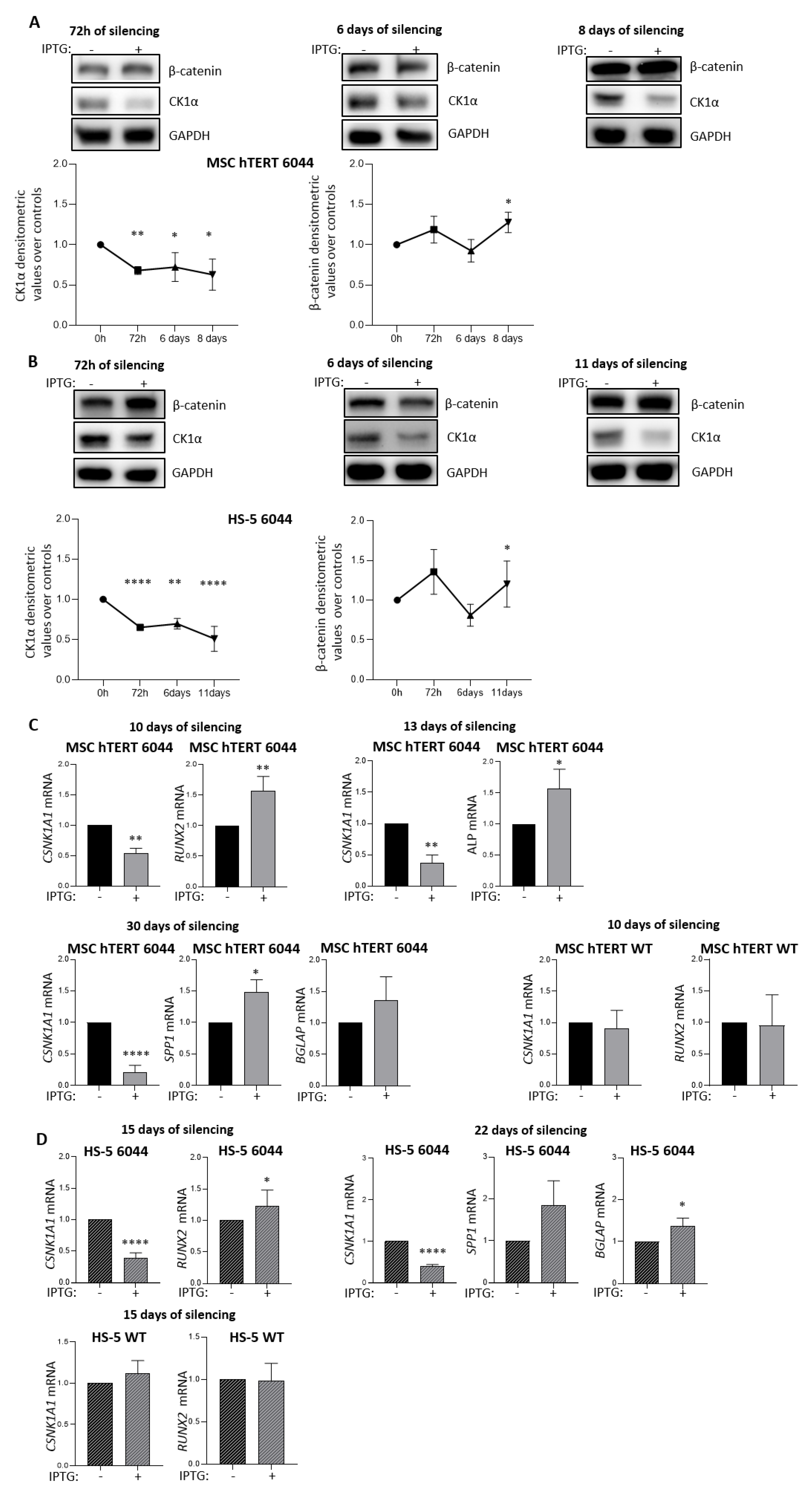
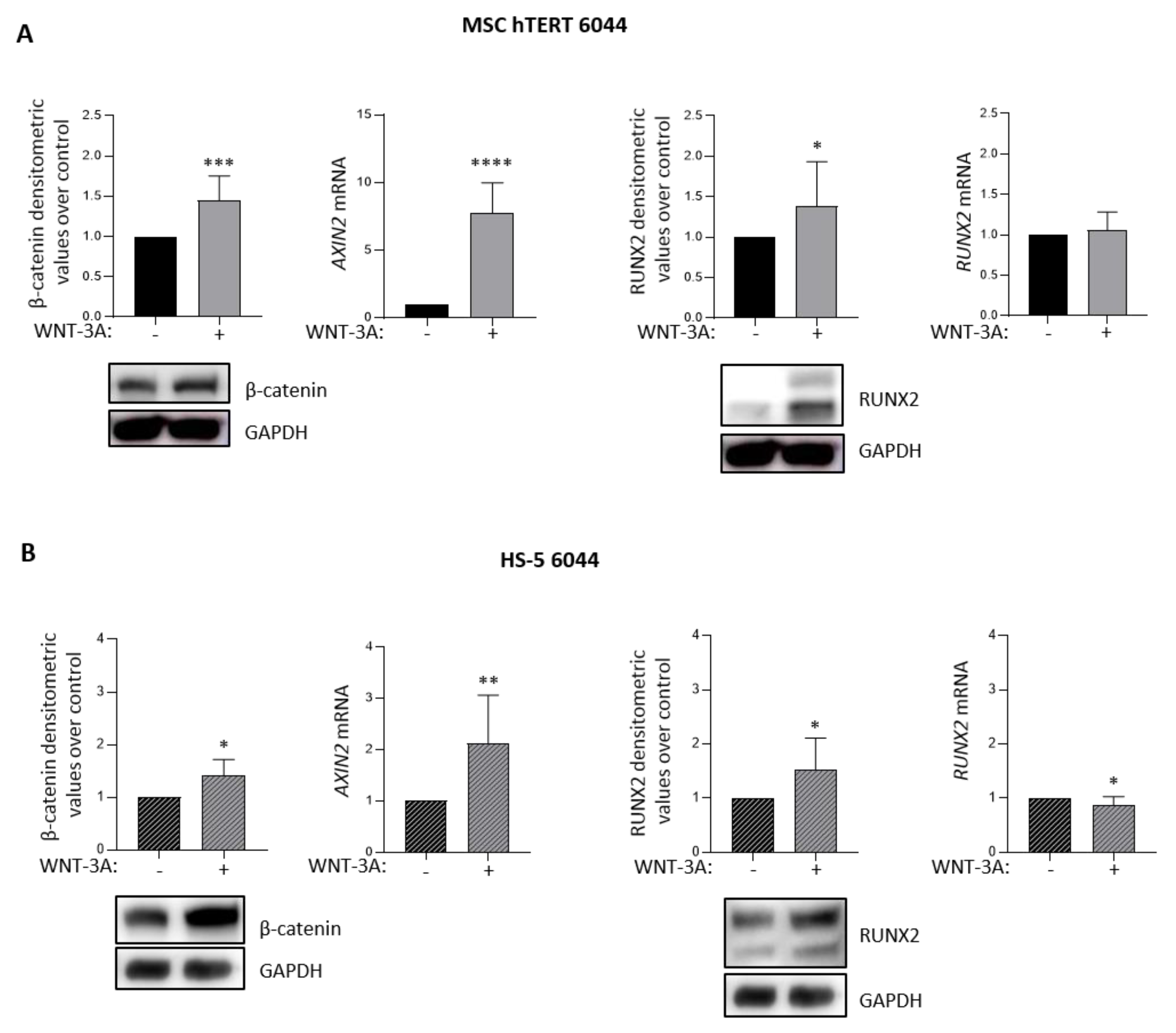
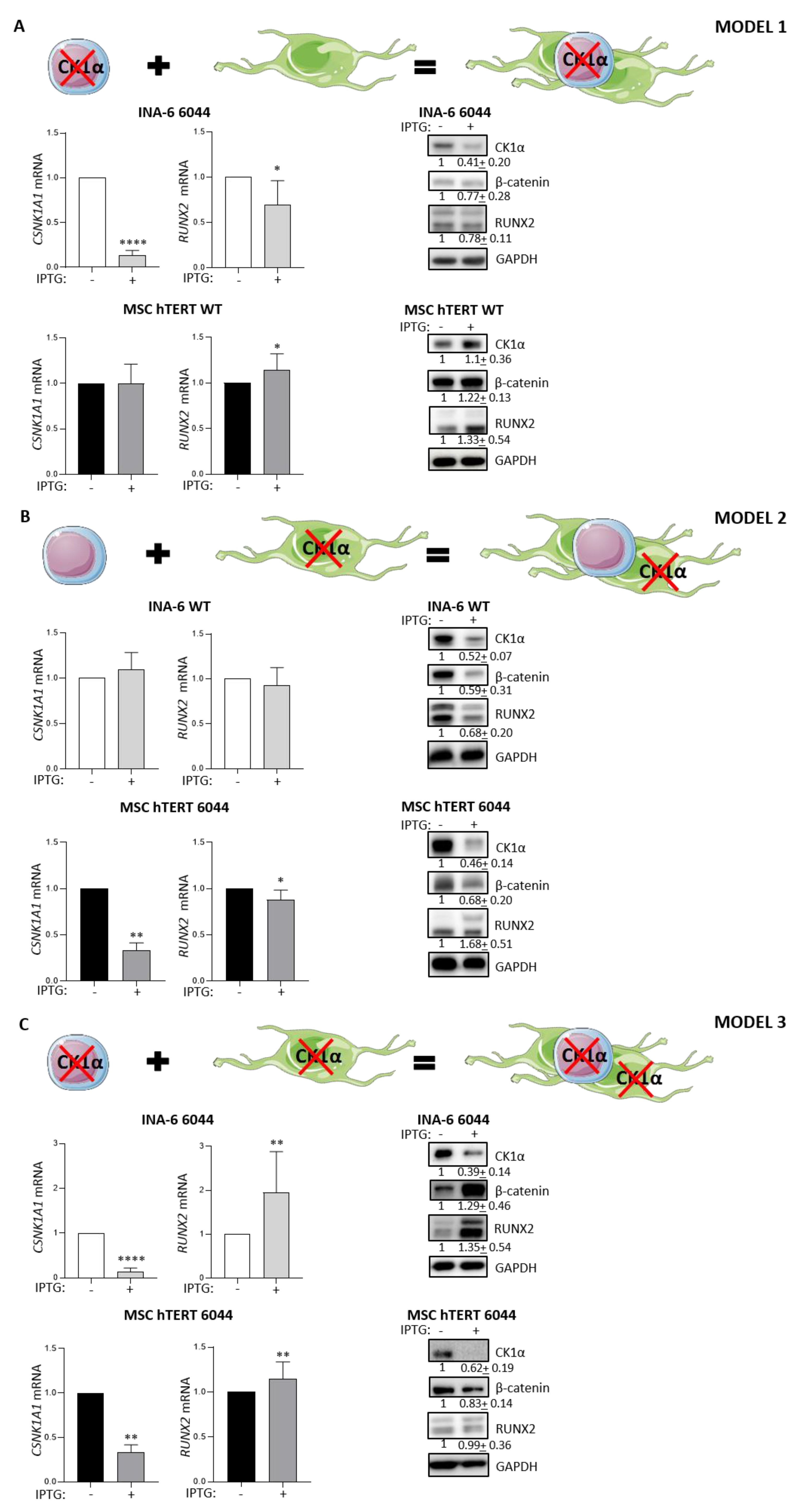
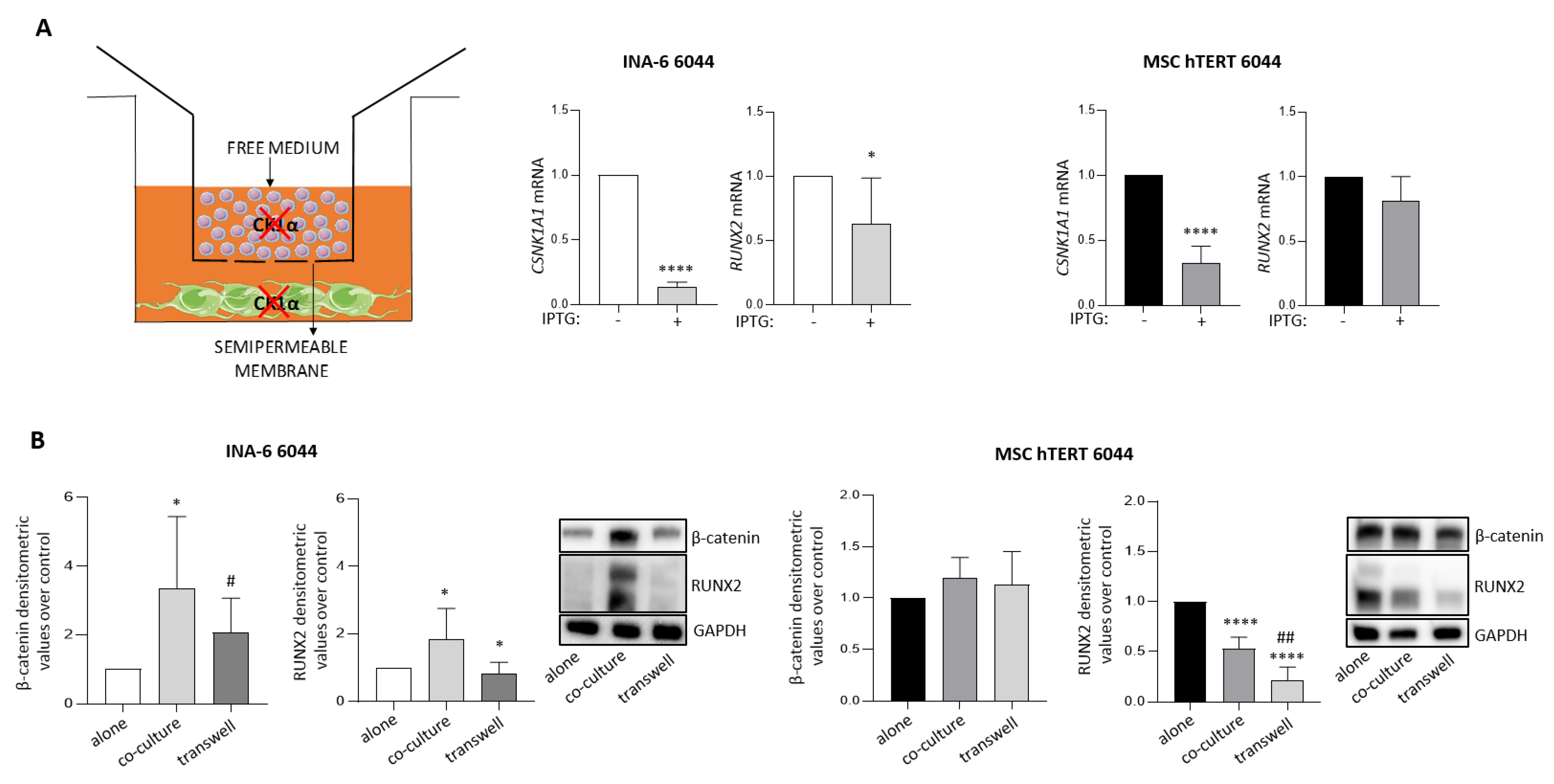
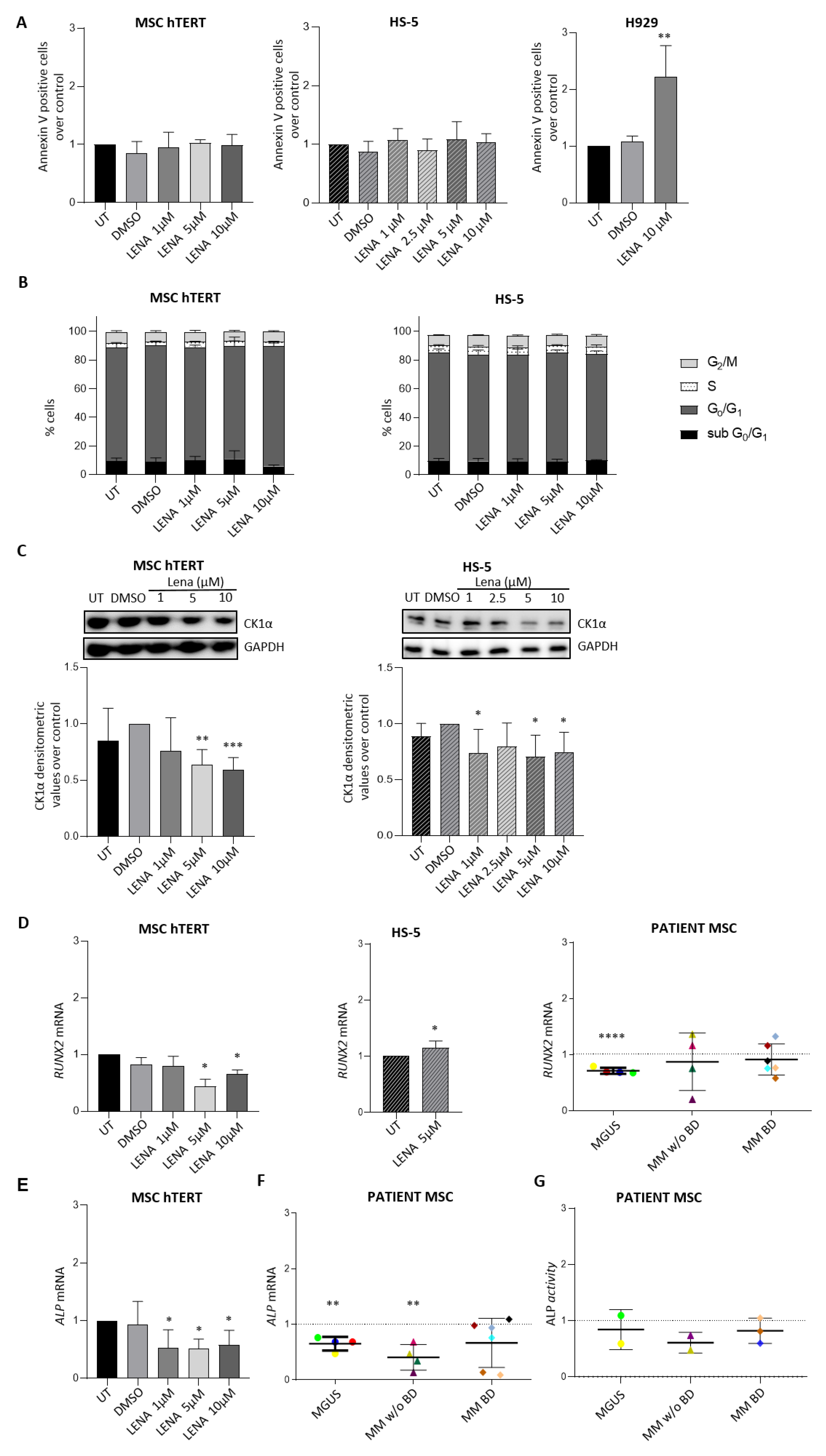
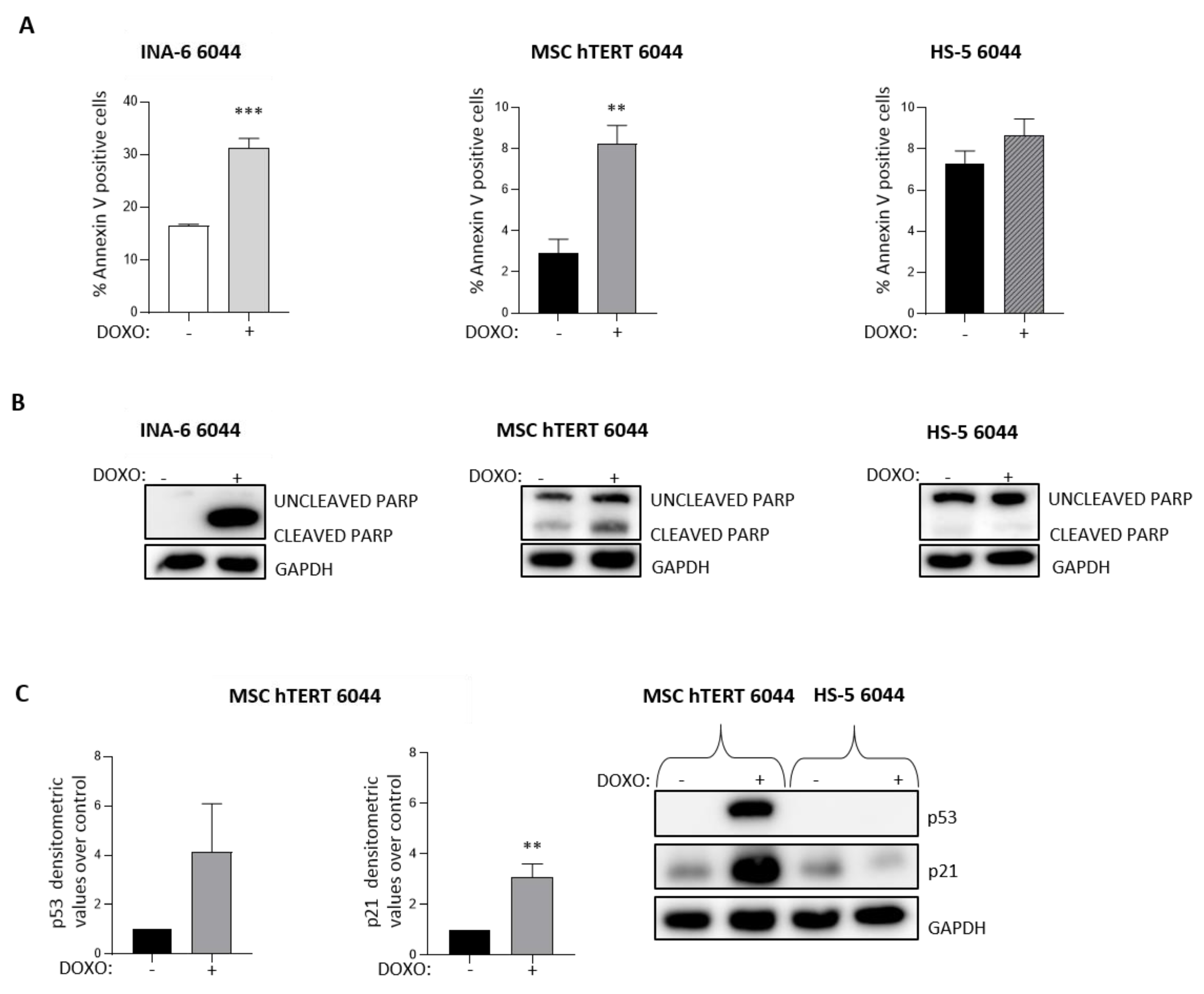
| MM# | DIAGNOSIS | SEX | AGE | ISS | R-ISS | PARAPROTEIN | PCs (%) | KARYOTYPE | BD | LENA | R/ND |
|---|---|---|---|---|---|---|---|---|---|---|---|
| 1 | MM | F | 72 | I | I | IgG/λ | 20 | monosomy 13 | N | N | ND |
| 2 | MM | F | 41 | I | I | IgG/κ | 50 | gain(1q) | Y | N | ND |
| 3 | MM | F | 56 | I | I | IgA/κ | 80 | standard | N | N | R |
| 4 | MM | F | 78 | I | I | IgA/κ | 80 | t(11;14), gain(1q) | N | N | ND |
| 5 | MM | F | 69 | I | I | IgA/λ | 52 | hyperdiploidy | Y | N | R |
| 6 | MM | M | 82 | II | II | IgG/λ | 35 | del(17) | Y | N | ND |
| 7 | MM | F | 71 | III | III | IgG/κ | 100 | t(4;14), gain(1q) | Y | N | R |
| 8 | MM | F | 69 | I | II | IgA/κ | 30 | del(17p), gain1q) | N | N | ND |
| 9 | MGUS | M | 83 | κ | 6 | nd | N | N | ND | ||
| 10 | MGUS | M | 56 | IgG/κ | 5 | nd | N | N | ND | ||
| 11 | MGUS | M | 49 | IgG/κ | 6 | nd | N | N | ND | ||
| 12 | MM | M | 67 | I | I | IgG/κ | 20 | less of Y | Y | N | R |
| 13 | MM | M | 71 | I | II | IgG/κ | 30 | t(4;14), gain1q | Y | N | ND |
| 14 | MGUS | F | 50 | IgG/κ | <1 | t(14;16) | N | N | ND | ||
| 15 | MM | M | 60 | III | III | κ | 70 | t(11;14) | Y | N | ND |
Publisher’s Note: MDPI stays neutral with regard to jurisdictional claims in published maps and institutional affiliations. |
© 2022 by the authors. Licensee MDPI, Basel, Switzerland. This article is an open access article distributed under the terms and conditions of the Creative Commons Attribution (CC BY) license (https://creativecommons.org/licenses/by/4.0/).
Share and Cite
Fregnani, A.; Saggin, L.; Gianesin, K.; Quotti Tubi, L.; Carraro, M.; Barilà, G.; Scapinello, G.; Bonetto, G.; Pesavento, M.; Berno, T.; et al. CK1α/RUNX2 Axis in the Bone Marrow Microenvironment: A Novel Therapeutic Target in Multiple Myeloma. Cancers 2022, 14, 4173. https://doi.org/10.3390/cancers14174173
Fregnani A, Saggin L, Gianesin K, Quotti Tubi L, Carraro M, Barilà G, Scapinello G, Bonetto G, Pesavento M, Berno T, et al. CK1α/RUNX2 Axis in the Bone Marrow Microenvironment: A Novel Therapeutic Target in Multiple Myeloma. Cancers. 2022; 14(17):4173. https://doi.org/10.3390/cancers14174173
Chicago/Turabian StyleFregnani, Anna, Lara Saggin, Ketty Gianesin, Laura Quotti Tubi, Marco Carraro, Gregorio Barilà, Greta Scapinello, Giorgia Bonetto, Maria Pesavento, Tamara Berno, and et al. 2022. "CK1α/RUNX2 Axis in the Bone Marrow Microenvironment: A Novel Therapeutic Target in Multiple Myeloma" Cancers 14, no. 17: 4173. https://doi.org/10.3390/cancers14174173
APA StyleFregnani, A., Saggin, L., Gianesin, K., Quotti Tubi, L., Carraro, M., Barilà, G., Scapinello, G., Bonetto, G., Pesavento, M., Berno, T., Branca, A., Gurrieri, C., Zambello, R., Semenzato, G., Trentin, L., Manni, S., & Piazza, F. (2022). CK1α/RUNX2 Axis in the Bone Marrow Microenvironment: A Novel Therapeutic Target in Multiple Myeloma. Cancers, 14(17), 4173. https://doi.org/10.3390/cancers14174173








